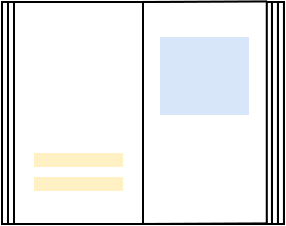
What is the EAA?
Through the European Accessibility Act (EAA), the European Union (EU) took an exemplary step to create a more accessible society, based on the Universal Declaration of Human Rights (UNCRPD). The purpose of this directive is to improve the functioning of the internal market for accessible products and services by removing barriers caused by divergent rules between the member states.
What's the Timeline for the EAA?
The act was originally proposed in 2011 as a complement to the EU's Web Accessibility Directive, which was passed in 2016.
In June 2019, the EU adopted the EAA. EU member states must adopt the directive into their national laws by June 2022. The law must be enforced by July 2025.

Who Must Comply?
Putting together the legislative drive of the EAA with the moral imperatives, there’s already a strong case for the EAA to be established.
When websites and digital products or services are accessible, the potent audience reach is increased. Website accessibility makes it easier for everyone to use and engage with your content. Accessible websites will experience a surge in positive customer reviews and user experience.
Additionally, web accessibility helps improve SEO — alt text and semantic HTML which are elements of web accessibility, also help inform search engines about the content and presentation of a website. So, customers who have low bandwidths are included in the experience of your web content.

What Does the EAA Cover?
The EAA hopes to transform everything from cash machines to computers to e-commerce apps through web accessibility.
The EAA's main objective is to provide people with disabilities with access to products and services. As a result, it encompasses a wide range of public and private products and services, including:
- websites
- computers and operating systems
- ATMs, ticketing, and check-in machines
- smartphones
- TV equipment related to digital television services
- telephony services and related equipment
- access to audio-visual media services such as television broadcast and related consumer equipment
- services related to air, bus, rail, and waterborne passenger transport
- banking services
- E-books
In order to promote inclusivity and ensure a uniform access policy, the directive harmonizes accessibility requirements across all EU member states. In addition, it ensures that economic operators, such as manufacturers, importers, and service providers, adhere to standardized measures and make conformity declarations as necessary.
Upon introducing the provisions into national legislation, EU members have one year to implement them and four years to implement them. The implementing laws must be passed by 28 June 2022, the accessibility measures implemented by 28 June 2025, and the reporting and review process must be completed by 28 June 2030, and every five years thereafter.
Implications of the EAA
By implementing the EAA, people with disabilities and the elderly will have access to more accessible products and services in the market, as well as more affordable products and services.
Meanwhile, businesses will benefit from reduced costs, easier cross-border trade, and increased market opportunities for their accessible products and services.

The EAA and WCAG 2.0/2.1 Compliance
In accordance with the EU Web Accessibility Directive, specific guidelines exist for making websites and apps accessible, namely the Web Content Accessibility Guidelines (WCAG). In light of the EU Web Accessibility Directive, public sector organizations throughout Europe must ensure that their websites and mobile applications are accessible, operable, understandable, and robust.
A major component of the EAA is the EU Web Accessibility Directive. By reference to WCAG 2.0, one can safely deduce that if your website is compliant with WCAG standards, you're on the right side of the law.
How to scan your website for EAA/EN301549 compliance
Enter a URL/domain.
Get an accurate and easy-to-understand audit (with visual illustrations and recommendations).
Share the audit report with your team.
Start fixing your site and ensure barrier-free access to people with disabilities.
A unique accessibility testing tool
Our free software automatically scans your website and identifies accessibility errors according to WCAG 2.0/2.1- EN 301 549 testing standards and their impact on individuals with a variety of disabilities.
Our automated web accessibility checker assesses the coding of the website and provides a detailed audit report that contains prioritized recommendations to enable you to remove barriers that could prevent people with disabilities from accessing the site.
How Accessi Works
The web accessibility scanner is fully automated, sorting your testing categories into:
High impact: issues that need urgent attention
Medium impact: corrections needed
Low impact: require manual review
Our EAA/EN301549 compliance checker provides a report that allows you to filter by:
Guidelines (WCAG 2.0/2.1) Level A-AAA
Priority (high, medium, and low impact)
Tags (CSS, HTML, JavaScript, etc)
Control your audit
The web accessibility checker also provides information on the accessibility barriers, best practices on how to test, and visual examples of wrong and right ways to achieve EN 301 549 compliance

FAQS
How do I perform EAA compliance testing?
By testing your website against the WCAG 2.1 Level AA using the Accessi.org web accessibility checker.
What are the Compliance Timelines for EAA?
The required timelines for compliance, monitoring, and enforcement for public sector agencies are:
- The act was originally proposed in 2011
- Accessibility Directive was passed in 2016
- In June 2019, the EU adopted the EAA
- The laws must be passed in member states by 28 June 2022
- The accessibility measures implemented by 28 June 2025
- And the reporting and review process must be completed by 28 June 2030, and every five years thereafter.
